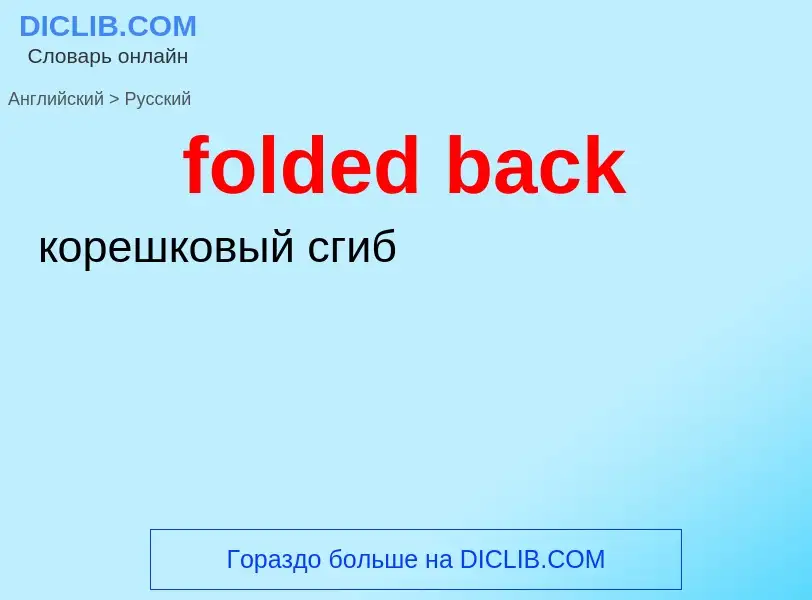Traduzione e analisi delle parole tramite l'intelligenza artificiale ChatGPT
In questa pagina puoi ottenere un'analisi dettagliata di una parola o frase, prodotta utilizzando la migliore tecnologia di intelligenza artificiale fino ad oggi:
- come viene usata la parola
- frequenza di utilizzo
- è usato più spesso nel discorso orale o scritto
- opzioni di traduzione delle parole
- esempi di utilizzo (varie frasi con traduzione)
- etimologia
folded back - traduzione in russo
[bæks]
общая лексика
парки и лужайки (кембриджских колледжей вдоль р. Кем; известны своей живописностью)
дословная передача
зады, так как колледжи обращены сюда своей задней стороной
существительное
общая лексика
парки и лужайки кембриджских колледжей вдоль реки Кем
Definizione
I'll have whisky neat with a beer back.
back button panic The spasmodic, uncoordinated movements you make when you're surfing porn on the Net and you realise that somebody is standing behind you and can see what you're doing...
I'd've managed to click out of weirdogirl.com before Mom saw anything if it hadn't been for back button panic.
Wikipedia

Wet-folding is an origami technique developed by Akira Yoshizawa that employs water to dampen the paper so that it can be manipulated more easily. This process adds an element of sculpture to origami, which is otherwise purely geometric. Wet-folding is used very often by professional folders for non-geometric origami, such as animals. Wet-folders usually employ thicker paper than what would usually be used for normal origami, to ensure that the paper does not tear.
One of the most prominent users of the wet-folding technique is Éric Joisel, who specialized in origami animals, humans, and legendary creatures. He also created origami masks. Other folders who practice this technique are Robert J. Lang and John Montroll.
The process of wet-folding allows a folder to preserve a curved shape more easily. It also reduces the number of wrinkles substantially. Wet-folding allows for increased rigidity and structure due to a process called sizing. Sizing is a water-soluble adhesive, usually methylcellulose or methyl acetate, that may be added during the manufacture of the paper. As the paper dries, the chemical bonds of the fibers of the paper tighten together which results in a crisper and stronger sheet. In order to moisten the paper, an artist typically wipes the sheet with a dampened cloth. The amount of moisture added to the paper is crucial because too little will cause the paper to dry quickly and spring back into its original position before the folding is complete, while too much will either fray the edges of the paper or will cause the paper to split at high-stress points.


.jpg?width=200)
![Gordon]], an enslaved person who was frequently whipped. Gordon]], an enslaved person who was frequently whipped.](https://commons.wikimedia.org/wiki/Special:FilePath/Cicatrices de flagellation sur un esclave.jpg?width=200)
![Painting of a woman's back by [[Edgar Degas]]. Painting of a woman's back by [[Edgar Degas]].](https://commons.wikimedia.org/wiki/Special:FilePath/Edgar Germain Hilaire Degas 029.jpg?width=200)
![Extensive back [[tattoo]]. Extensive back [[tattoo]].](https://commons.wikimedia.org/wiki/Special:FilePath/Thai tattoo Chiang Mai 2005 058.jpg?width=200)


![Distribution of [[cutaneous nerve]]s, dorsal aspect. Dorsal and lateral cutaneous branches labeled at center right. Distribution of [[cutaneous nerve]]s, dorsal aspect. Dorsal and lateral cutaneous branches labeled at center right.](https://commons.wikimedia.org/wiki/Special:FilePath/Gray798-back crop.png?width=200)
